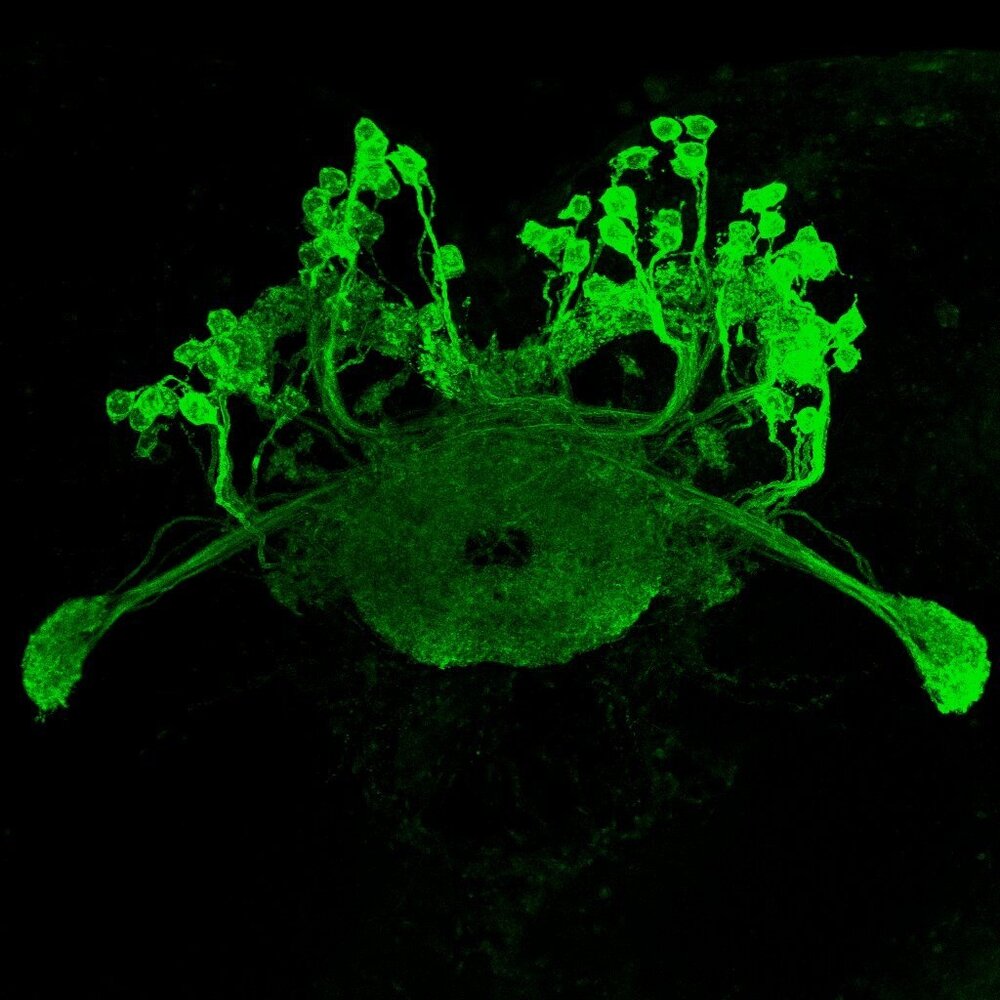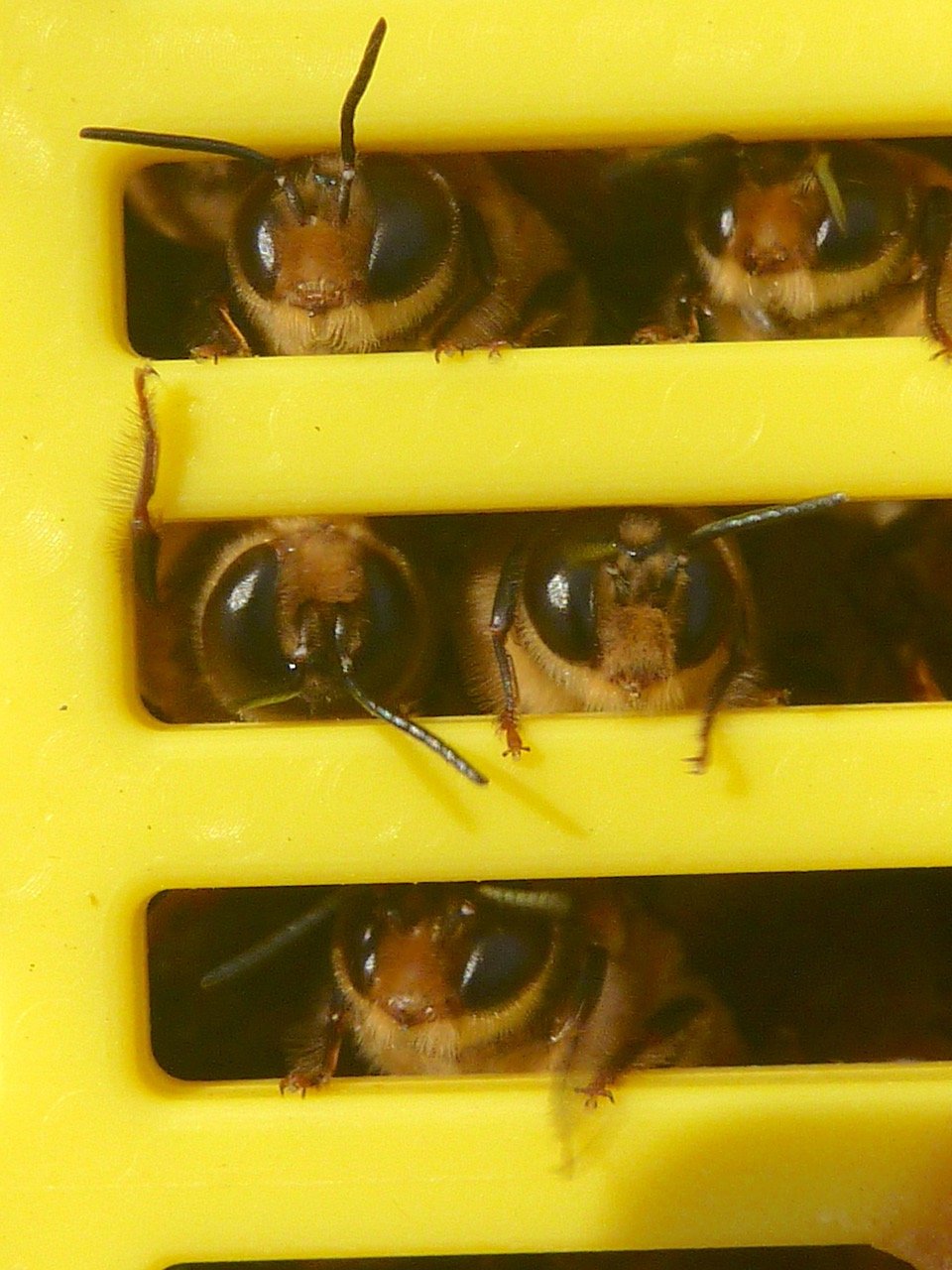
Lab News
Our work on nanoparticle-mediated insecticide delivery in stink bugs published in nature Communications.
Research program
I am interested in exploring insect locomotion and sensory processing from the level of neurons to species. Orientation and navigation are fundamental for animals to move through their environments and require integration of a variety of sensory cues. For many animals, such as locusts or monarch butterflies, navigation depends on the internal state of the animal and environmental conditions. Like these larger insects, even the humble vinegar fly, Drosophila melanogaster, can disperse long distances using celestial cues. In my lab we will leverage the genetic tools available to probe the neural circuits underlying orientation and navigation. In addition to learning about how animals move in the environment, this provides a powerful system to explore sensory-motor integration. How do animals process sensory cues and how does the nervous system transform this information into different motor patterns? We currently explore Drosophila responses to celestial cues during flight while varying sensory and motor inputs to explore their effect on flight behavior. Furthermore, we seek to bring the power of the genetic toolkit of Drosophila to other systems, beginning with honeybees, to explore how the detection of stress-inducing odors is processed in the brain, expressed in individual behavior, and ultimately communicated with the colony as a whole. A third avenue of research in the lab examines how extreme environments and environmental stressors, such as insecticides, shape insect locomotion and physiology.
Neural circuits
–
Using genetic tools and live neural imaging we will examine neurons involved in orientation and navigation behavior.
stressors in honeybees
–
Using volatile odors, we are exploring how stress-tolerant and stress-suscpeptible honeybees process and communicate stress.
Extreme environments
–
We are currently exploring how hypergravity affects walking and geotactic behaviors in flies.
Neural circuits

Exploring the neural circuitry underlying orientation
Using genetic tools available in Drosophila melanogaster, we seek to identify neurons involved in celestial orientation. Multiphoton imaging allows us to quantify activity of specific cells or cell classes during flight behavior. Optogenetic tools allow us to precisely silence or activate cells during behavior. In conjunction with novel methods to identify neurons that putatively connect with neurons of interest (trans-Tango, photoactivatable GFP) we can effectively identify and characterize how information is processed in the insect brain during an ethologically-relevant behavior.
Stressors in honeybees

Deciphering social communication in stress-tolerant honeybees
Decoding how environmental threats are perceived by individuals, processed, and eventually passed on to other members of a society to trigger a coordinated response is a fundamental but still unsolved challenge in sociobiology. We will compare the communication of stressors from neurons to individuals, then groups, and ultimately entire societies in two honeybee genotypes: stress-susceptible, domesticated colonies compared to locally occurring stress-tolerant genotypes (‘survivor’ bees). Through a series of neurobiological and behavioral lab- and field experiments, we aim to confirm that survivor bees possess highly sensitized neural responses to key effector molecules. The prediction is that survivor bees pass on signals of potential threats to the colony more efficiently and ultimately trigger more effective societal responses compared to stress-susceptible genotypes. We will also test whether colonies can transmit information about potential environmental threats for multiple generations of worker bees, which would indicate transgenerational stress priming and can be seen as a basic form of culture. Successful completion of this project will not only expand our understanding of superorganisms, but also benefit efforts to safeguard honeybees, their pollination services, and global food production.
Extreme Environments
Responses to hypergravity
Exposure to high or low gravity can have dramatic impact on animal’s physiology, and understanding its effects has particular importance for human space travel. We leverage the genetic tools in Drosophila to explore how acute and chronic exposure to the evolutionarily novel stimulus of hypergravity leads to changes in locomotion through effects on physiology and the nervous system.
Hypergravity simulator.
After acute exposure to 7G, flies do not exhibit typical geotactic behavior (vertical wall climbing).

